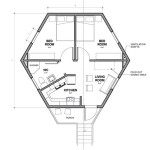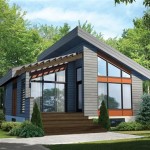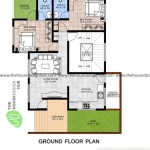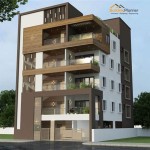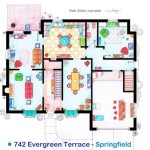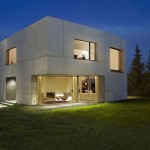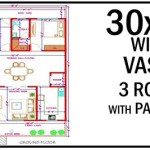Exploring the Nuances of New Model Home Plans
The residential construction sector is in constant evolution. New model home plans are introduced regularly, reflecting shifts in demographics, lifestyle preferences, technological advancements, and prevailing economic conditions. These plans represent more than just blueprints; they are a culmination of market research, architectural innovation, and a strategic response to the changing needs of potential homebuyers.
Understanding the intricacies of new model home plans requires a comprehensive examination of several key factors. These encompass design trends, efficient space utilization, sustainable building practices, and the incorporation of smart home technology. Developments in building materials, construction methods, and regulatory standards also exert a significant impact on the features and functionality of these plans.
Analyzing Current Design Trends in Model Home Plans
Design trends play a pivotal role in shaping the aesthetics and functional layout of new model homes. Open-concept living continues to be a dominant feature, emphasizing fluidity between living spaces, dining areas, and kitchens. This design philosophy encourages social interaction and provides a sense of spaciousness, particularly appealing to families and individuals who enjoy entertaining.
However, there is also a growing recognition of the need for dedicated, private spaces within the home. As remote work becomes more prevalent, home offices are increasingly incorporated into model home plans, often featuring soundproofing, ergonomic design, and optimized connectivity. Similarly, separate living areas or dens offer quiet retreats for relaxation or focused activities.
Outdoor living spaces are also gaining prominence. Patios, decks, and screened-in porches extend the living area beyond the physical boundaries of the house, providing spaces for outdoor dining, recreation, and relaxation. Landscaping, outdoor lighting, and integrated entertainment systems further enhance the usability and appeal of these outdoor spaces.
Furthermore, contemporary design often emphasizes natural light and visual connections to the outdoors. Large windows, skylights, and strategically placed doors maximize daylight penetration, reducing the need for artificial lighting and creating a brighter, more inviting indoor environment. Attention to window placement also considers solar orientation and energy efficiency, minimizing heat gain in summer and maximizing passive solar heating in winter.
Optimizing Space Utilization and Functionality
Efficient space utilization is a critical consideration in the design of new model home plans. Architects and designers are constantly exploring innovative ways to maximize the functionality of every square foot, creating homes that feel larger and more livable than their actual size. This involves careful planning of room layouts, the incorporation of multi-functional spaces, and the strategic use of storage solutions.
Multi-functional spaces are designed to serve multiple purposes, adapting to the changing needs of the occupants. A guest room, for example, may also function as a home office or a hobby room. Similarly, a finished basement can serve as a recreation room, a home theater, or a secondary living area. This adaptability allows homeowners to maximize the utility of their living spaces and accommodate a variety of lifestyle requirements.
Storage solutions are essential for maintaining a clutter-free and organized living environment. Built-in shelving, custom cabinetry, and walk-in closets provide ample storage space for belongings, while clever design features such as under-stair storage and attic conversions can further enhance storage capacity. The placement and design of storage solutions are carefully considered to ensure easy access and efficient organization.
Universal design principles are also increasingly incorporated into model home plans, promoting accessibility and usability for people of all ages and abilities. These principles include features such as wider doorways, roll-in showers, lever-style door handles, and adjustable-height countertops. Universal design ensures that homes are comfortable and accessible for individuals with mobility limitations, as well as for families with young children or aging relatives.
Integrating Sustainable Building Practices and Smart Home Technology
Sustainability and technology are increasingly interwoven into the fabric of new model home plans. Homebuyers are becoming more conscious of the environmental impact of their homes and are seeking features that reduce energy consumption, conserve water, and promote healthy indoor air quality. At the same time, smart home technology offers enhanced convenience, security, and energy efficiency.
Sustainable building practices encompass a broad range of strategies, from the selection of eco-friendly materials to the implementation of energy-efficient design features. Renewable building materials, such as bamboo flooring, reclaimed wood, and recycled-content insulation, reduce the demand for virgin resources and minimize environmental impacts. Energy-efficient appliances, high-performance windows, and well-insulated walls and roofs reduce energy consumption and lower utility bills.
Water conservation is another important aspect of sustainable building. Low-flow toilets, showerheads, and faucets reduce water usage without compromising performance. Rainwater harvesting systems can collect rainwater for irrigation or other non-potable uses, further reducing reliance on municipal water supplies. Drought-tolerant landscaping minimizes the need for irrigation and conserves water resources.
Smart home technology offers a wide range of benefits, from automated lighting and HVAC control to enhanced security and entertainment systems. Smart thermostats learn occupants' preferences and adjust the temperature automatically, optimizing energy efficiency. Smart lighting systems allow for remote control of lighting and dimming, reducing energy consumption and enhancing ambiance. Security systems can monitor doors, windows, and other entry points, providing peace of mind and deterring intruders.
The integration of smart home technology extends beyond individual devices, encompassing entire home automation systems that can be controlled from a central hub or a smartphone app. These systems can communicate with each other, creating automated scenarios that respond to specific conditions or events. For example, a smart lighting system can be programmed to turn on automatically at sunset, or a smart thermostat can be adjusted remotely to save energy when the home is unoccupied.
Furthermore, the prevalence of electric vehicles (EVs) is influencing model home plans. Garages increasingly feature EV charging stations to cater to the growing number of EV owners. The electrical infrastructure of the house is also designed to accommodate the higher power demands of EV charging, ensuring that the home can support the charging needs of present and future EV owners.
The ongoing evolution of new model home plans is largely driven by the interplay of these factors. As technology advances, consumer preferences shift, and ecological concerns grow, the residential construction industry continues to innovate, developing homes that are more functional, sustainable, and technologically advanced than ever before. Understanding these trends and their implications is crucial for anyone involved in the buying, selling, or building of new homes.

Pin By Raeetha Bipin On House Plans Home Design Floor Kerala N

4 Bedroom 1750 Sq Ft Modern Home Design New Model House Kerala Construction

150 Model Houses Ideas Kerala House Design N Plans

Loading In 2024 N House Plans Free Courtyard

Contemporary Model House Plans Jai Constructions Kerala Home

House Plans Bungalow Floor Duplex Model Plan New

Kerala Style House Designs And Floor Plans Homeminimalis Throughout Beautiful New Home Pla Model Plan Design

Contemporary House Plans In Kerala Model Home

22 5 X60 0 Home Plan New Model Homeplan House Plans Small Design Bungalow

Check Out These 3 Bedroom House Plans Ideal For Modern Families

